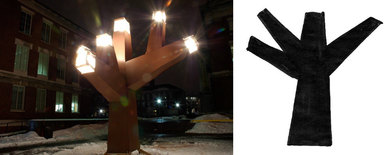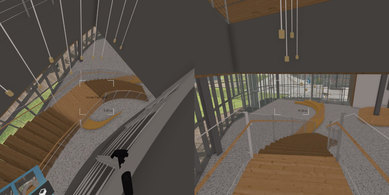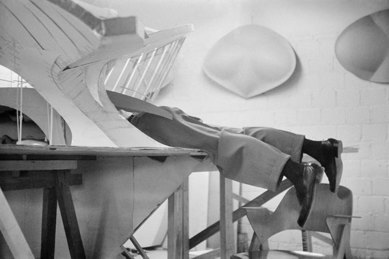Virtually Real Design
Architects and designers use plans, sections, perspective renderings, animations or models to describe a space. Personally, I have always been drawn to building models. As a sculpture student, I always worked from a mock-up rather than detailed drawings. As an architecture student, I would walk into a critique with nothing but a pristine model and diagrammatic drawings—sometimes to the horror of my professors. I find myself drawn to modeling because this is the only method within traditional documentation that actually uses three dimensions to describe space. It seems to be how my mind can best wrap itself around converting abstract representation into a real experience.
Viewing a building design in virtual reality (VR) allows contributors to better relate to the experience of viewing a detailed physical model, rather than two-dimensional renderings or animations. While the VR experience could begin as viewing a virtual model on a table like that of a physical model, one of the beauties of VR technology is that one can be “transported” into the model. It then becomes an immersive, three-dimensional, true-to-life experience. Instantaneous feedback in VR allows users to “climb” a monumental stair to understand different guardrail options, or walk a corridor to “feel” changes in ceiling height. Architects and designers benefit from the ability to hypothesize and test the design thoroughly. Early schematic design models in VR help users understand the design at a spatial level. As the project moves through the design process, entire finish schemes can be tested, altered and retested as needed. To me, this experience is much more “real” than any two-dimensional rendering.
Architects and designers are experts at envisioning the feel and atmosphere of a three-dimensional space through two-dimensional abstractions. We take abstractions and fill in the gaps using personal experience to understand the intended reality of the built space. Technology not only helps us prove our own predictions internally, but also makes it easier to share our vision with clients.
As a presentation tool, our industry has become comfortable with photorealistic renderings that provide an accurate depiction of the materials, lighting, and proportions of a space. Renderings absolutely serve a purpose and allow designers to apply artistic license to sell the potential of an idealized space. Animated renderings are becoming more and more common. These animations begin to move towards an immersive experience, allowing a viewer to understand what it feels like to move through a single predetermined path in space. Both are useful to tell a story, but both have a perspective that can be authored by the creator and remain in two dimensions.
Virtual reality starts to eliminate the gaps in our abstraction and provide a real picture that clients can immediately understand. Virtual reality is truthful—materials, lighting, and environment may need to be preset, but the user has a freedom to move as they wish and look at what they wish. The user has the ability to instantaneously pause, rewind or change perspectives. In VR, the designer cannot hide aspects of a design that are not ideal. The instantaneous understanding that VR provides of the space more closely relates to the way we experience space every day—in 3D.
As VR technology continues to advance, it will be exciting to see what comes next. In the year that SmithGroup has been experimenting with VR technology, workflows have become simpler and the experiences more immersive. With each new project, we can look forward to testing what is possible and continue to evolve the way we view design.


